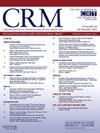Percutaneous coronary intervention strategies in non-ST segment elevation acute coronary syndrome patients with multivessel coronary artery disease: Systematic review pairwise and network meta-analysis
IF 1.6
Q3 CARDIAC & CARDIOVASCULAR SYSTEMS
引用次数: 0
Abstract
Background
More than half of NSTEACS patients are presented with multivessel CAD. Culprit vessel only or complete revascularization (CR) guided either by angiography or fractional flow reserve (FFR) is available percutaneous coronary intervention (PCI) options. This study aims to compare different PCI strategies in NSTEACS patients with multivessel CAD.
Methods
Observational and RCTs studies are selected and compared for short- and long-term outcomes of all-cause mortality, MACE, and repeat revascularization. Odds ratio (OR) and SUCRA ranking of 4 interventions; (A) culprit vessel only revascularization, (B) single stage CR guided by angiography, (C) single stage CR guided by FFR, and (D) multistage CR guided by angiography are reported as pairwise and pooled network frequentist analysis conducted using RevMan and R software.
Results
Thirty- six studies with 213,254 patients were included. Pairwise analysis of A vs B shows no significant difference in short term outcomes. Pooled network analysis demonstrates that B, C, and D resulted in a significantly lower odds of long-term all-cause mortality compared to A (OR 0.42–0.77, 95 % CrI: 0.19–0.91). SUCRA ranking shows that C is more favorable compared to other interventions to reduce long term all-cause mortality and MACE (SUCRA 0.932 and 0.953). Sensitivity analysis with only RCTs and propensity matched scoring observational studies retains the significance and ranking of the interventions.
Conclusion
CR is just as safe as culprit vessel revascularization and single stage CR guided by FFR is the most preferable strategy to reduce risk of all- cause mortality and MACE.
PROSPERO ID
CRD42023491792.
多支血管冠状动脉疾病的非ST段抬高急性冠状动脉综合征患者的经皮冠状动脉介入治疗策略:系统综述配对和网络荟萃分析。
背景:一半以上的 NSTEACS 患者伴有多血管 CAD。在血管造影或分数血流储备(FFR)的指导下,仅对病灶血管或完全血运重建(CR)进行经皮冠状动脉介入治疗(PCI)是可行的选择。本研究旨在比较多血管 CAD NSTEACS 患者的不同 PCI 策略:方法:选择观察性研究和 RCTs 研究,并对全因死亡率、MACE 和重复血管再通的短期和长期结果进行比较。使用 RevMan 和 R 软件对 4 种干预措施:(A)仅对罪魁祸首血管进行血运重建;(B)血管造影术指导下的单期 CR;(C)FFR 指导下的单期 CR;(D)血管造影术指导下的多期 CR 进行成对和集合网络频数分析:结果:共纳入 36 项研究,213254 名患者。A 与 B 的配对分析表明,短期疗效无显著差异。汇总网络分析显示,与 A 相比,B、C 和 D 的长期全因死亡率显著降低(OR 0.42-0.77,95 % CrI:0.19-0.91)。SUCRA 排名显示,与其他干预措施相比,C 更有利于降低长期全因死亡率和 MACE(SUCRA 0.932 和 0.953)。仅对研究性临床试验和倾向匹配评分观察性研究进行的敏感性分析保留了干预措施的重要性和排名:CR与罪魁祸首血管再通术一样安全,FFR指导下的单期CR是降低全因死亡率和MACE风险的最理想策略:CRD42023491792。
本文章由计算机程序翻译,如有差异,请以英文原文为准。
求助全文
约1分钟内获得全文
求助全文
来源期刊

Cardiovascular Revascularization Medicine
CARDIAC & CARDIOVASCULAR SYSTEMS-
CiteScore
3.30
自引率
5.90%
发文量
687
审稿时长
36 days
期刊介绍:
Cardiovascular Revascularization Medicine (CRM) is an international and multidisciplinary journal that publishes original laboratory and clinical investigations related to revascularization therapies in cardiovascular medicine. Cardiovascular Revascularization Medicine publishes articles related to preclinical work and molecular interventions, including angiogenesis, cell therapy, pharmacological interventions, restenosis management, and prevention, including experiments conducted in human subjects, in laboratory animals, and in vitro. Specific areas of interest include percutaneous angioplasty in coronary and peripheral arteries, intervention in structural heart disease, cardiovascular surgery, etc.
 求助内容:
求助内容: 应助结果提醒方式:
应助结果提醒方式:


